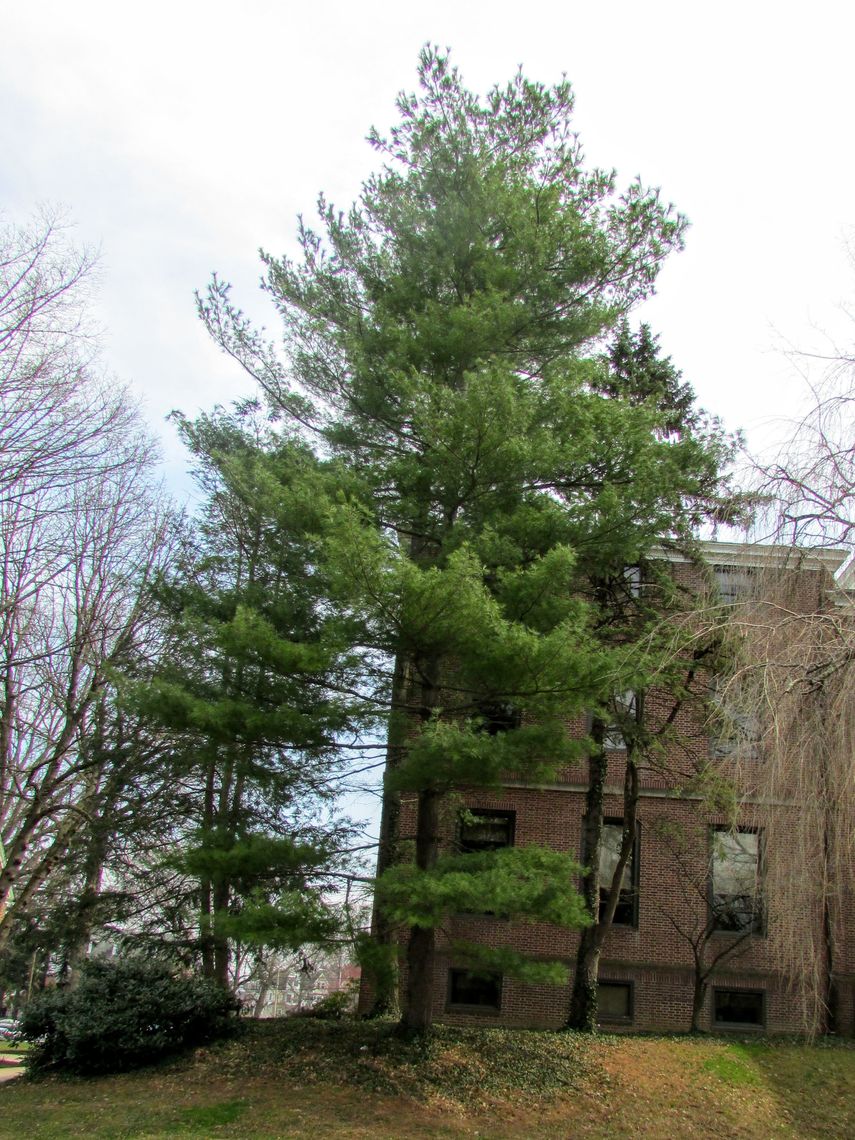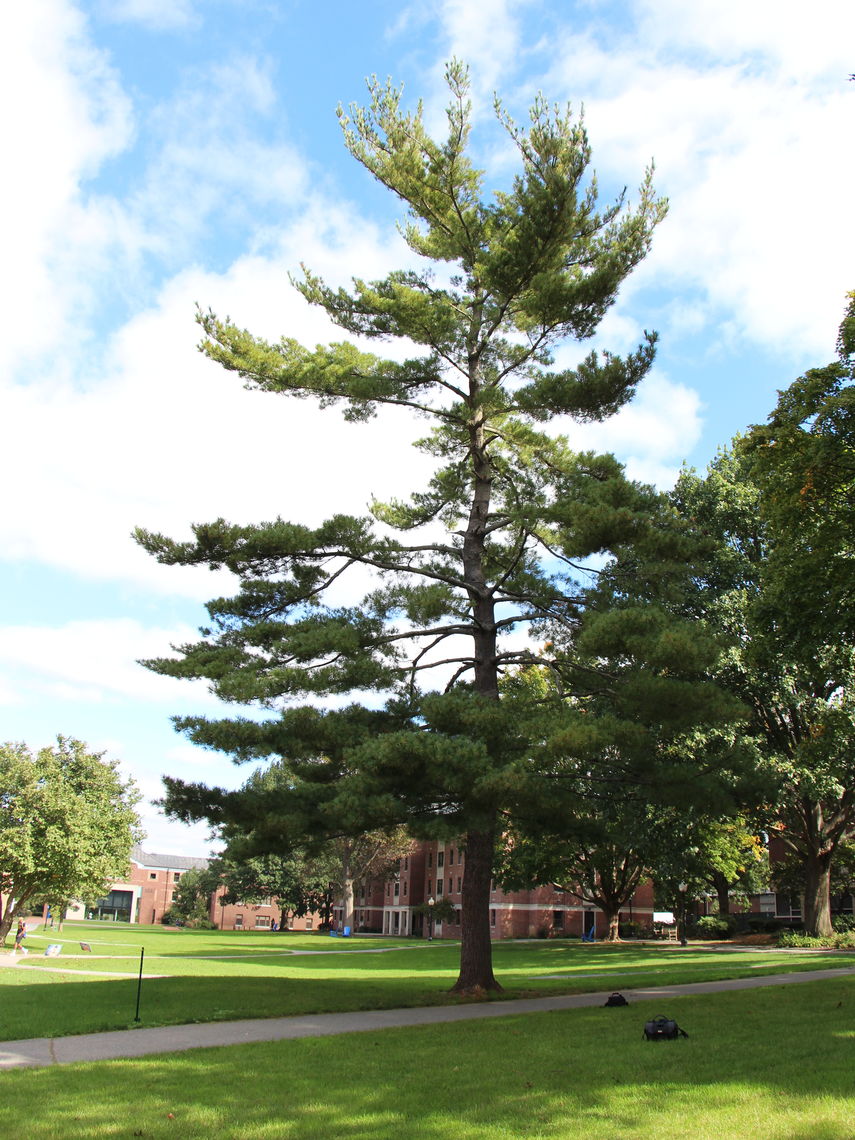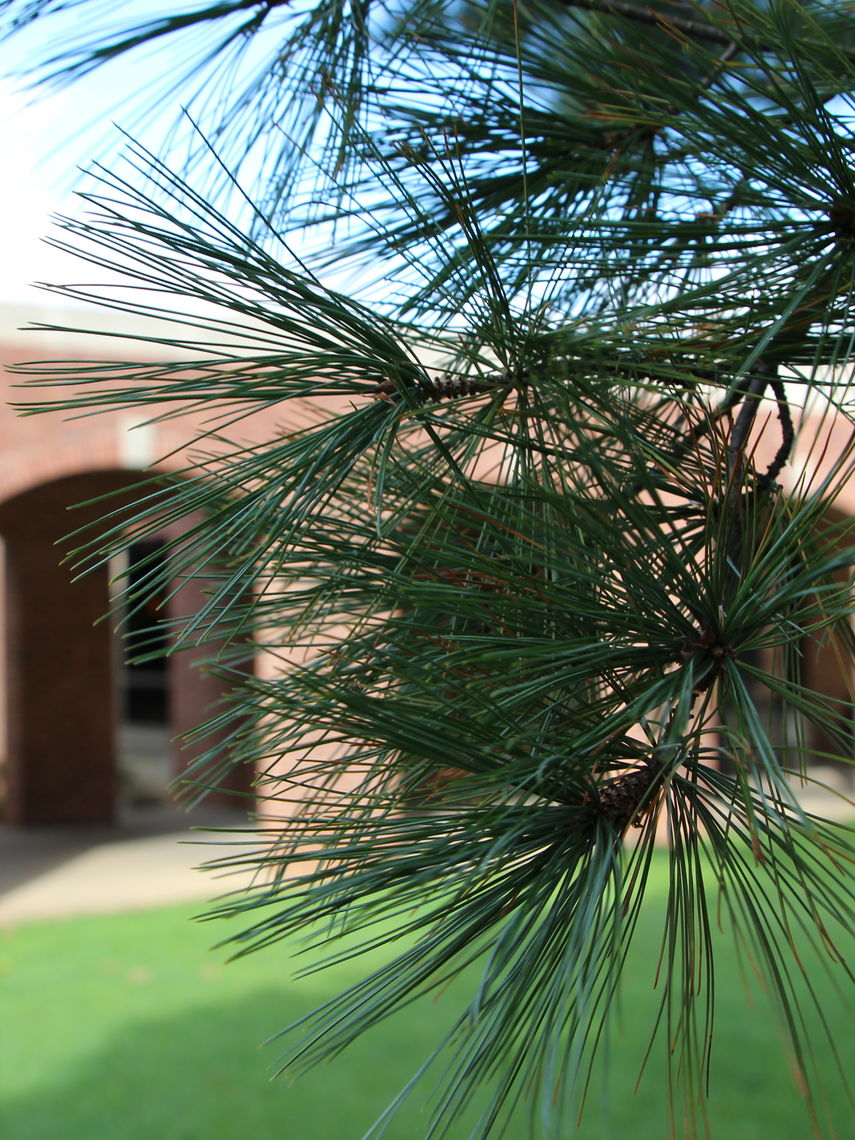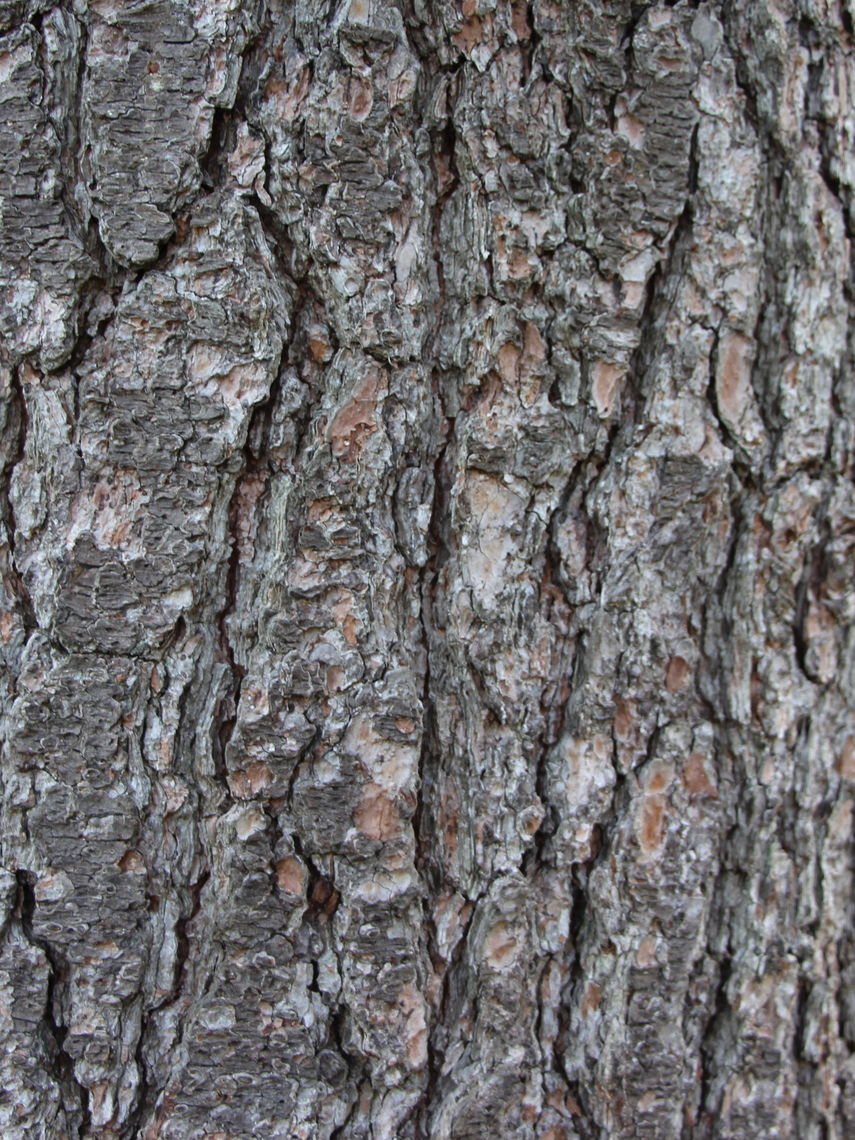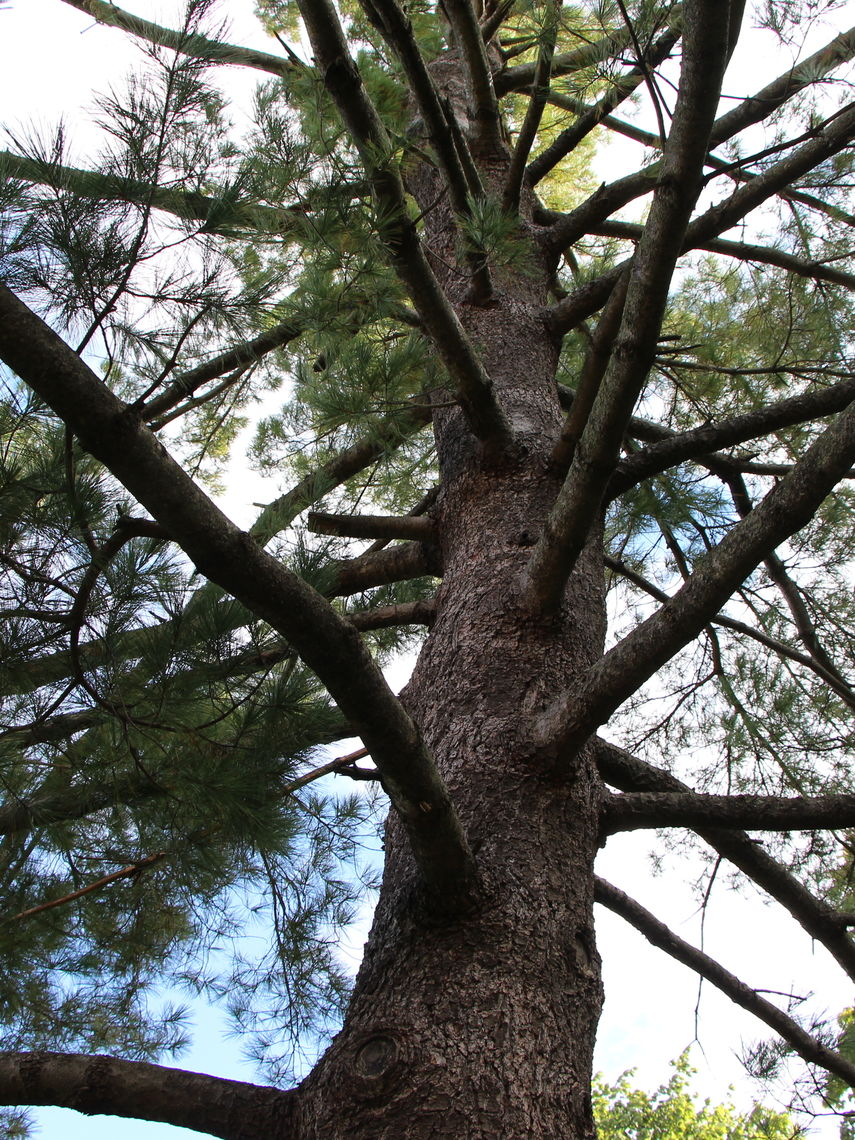Eastern White Pine (Pinus strobus)
The Eastern white pine is most notable for its feathery, thin, long needles which are soft to the touch and occur in clusters of 5. They range in color from light green to medium green or blue green. In the 18th and 19th centuries, this was an important timber tree. It attracts moths, birds, and small mammals.
Family: Pinaceae (Pine)
Characteristics: The 2-inch to 5-inch-long needles are feathery, grow in clusters of 5, and range in color from light-medium green to blue green. The needles remain on the tree for 2-3 years before dropping in the fall. Cones are cylindrical, brown, and 8 inches long. The tree takes about 5-10 years to begin producing cones. When young, this tree has a pyramidal shape. With age, it becomes more broad and oval in shape and develops an irregular crown. Branches are wide and horizontally spreading. This tree grows 50-80 feet high and 20-40 feet wide.
Foliage: Evergreen (foliage present year round)
Geographic Origin: Southeastern Canada, eastern U.S. (native)
 Cultivation Notes: Requires low maintenance. Does best in full sun. Prefers acidic, moist, and well-drained soils, though is tolerant to a wide range of soil conditions. Grows best in cool and humid climates. This tree is intolerant to many air pollutants.
Number on Campus: 22
Sources: Dirr, Morton Arboretum, Missouri Botanical Garden

